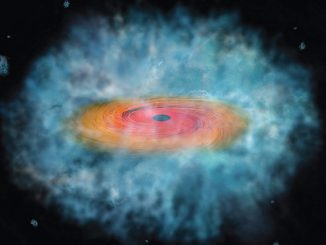A favourite target for amateur astronomers, the Wild Duck Cluster, also known as Messier 11 and, more formally NGC 6705, is a stunning sight in even small telescopes with its brightest stars forming a “V” shape reminiscent of a flock of ducks. Located in the constellation Scutum, the cluster is about 6,200 light years from Earth and contains nearly 3,000 stars, making it one of the richest and most compact open clusters known. It was discovered in 1681 and included in comet-hunter Charles Messier’s famous catalogue in 1764. This view from the Hubble Space Telescope was chosen as “Picture of the Week” at the European Space Agency’s Hubble site.




